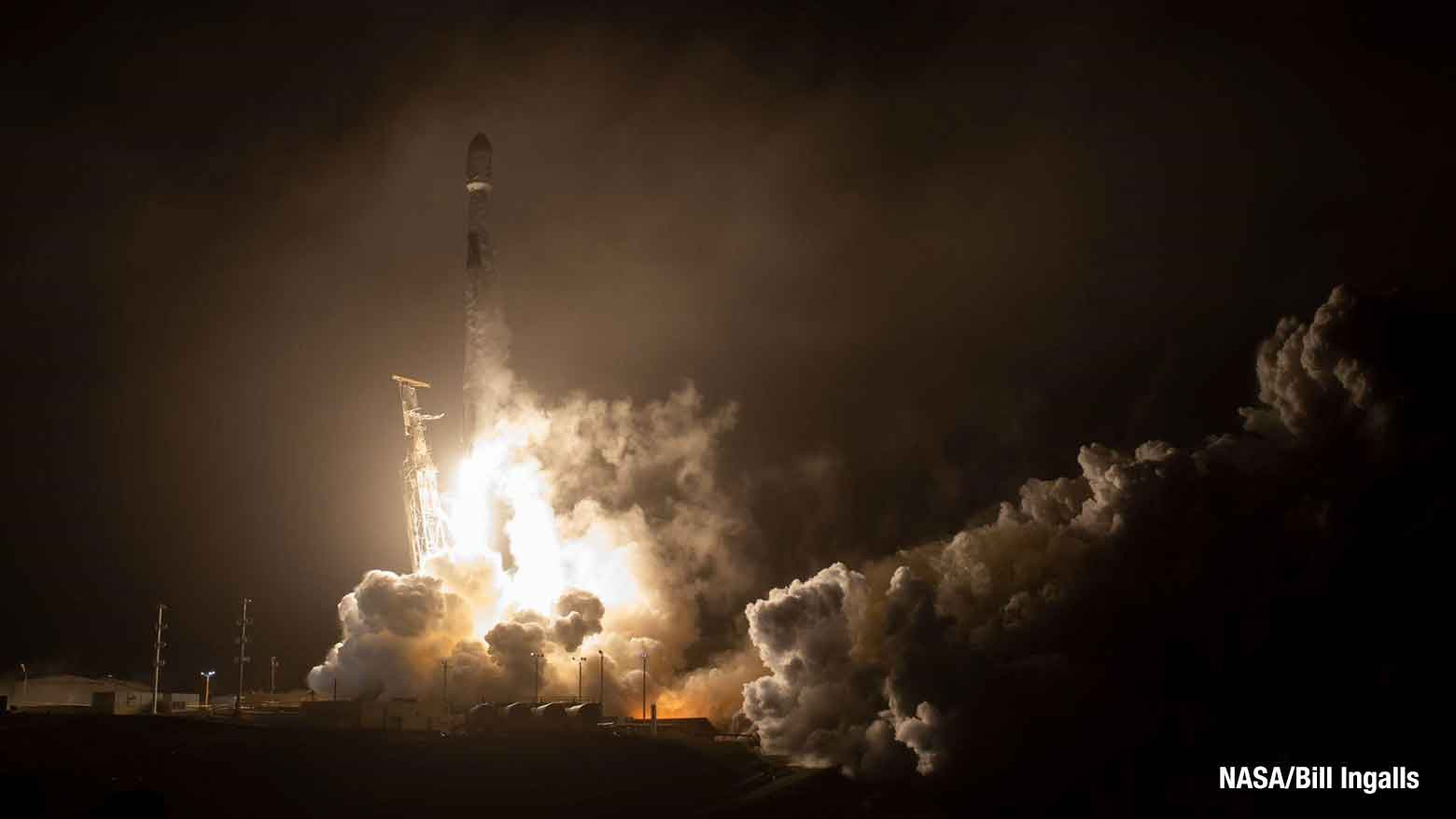Late in the night of November 23, NASA launched a rocket from the coast of California carrying a spacecraft with an unusual purpose — it was designed to be destroyed.
The Double Asteroid Redirection Test, or DART, is traveling to a near-Earth asteroid with the intention of smashing into its small moon and imparting enough momentum to slightly change the rock’s orbit. Though this binary asteroid system is of no threat to our planet — either before or after it gets walloped by a careening hunk of metal — the DART mission will test a method we could use to divert an Earth-bound asteroid or comet.
Killer asteroids on course to blow humanity to smithereens is a well-worn Hollywood plot device. Last month, for example, Netflix released the comedy-drama Don’t Look Up, in which Leonardo DiCaprio and Jennifer Lawrence play astronomers who try to warn of a comet hurtling toward Earth. The actual problem is real enough, however — a “low-probability, high-impact scenario” that many are taking seriously. In recent years, governments and international organizations have started assembling plans and programs dedicated to planetary protection.
Testing a deflection technique
DART is targeting the asteroid Didymos and its moon Dimorphos to test the impactor technique in an easily measurable way. The spacecraft will smash its 550 kilograms into Dimorphos at 24,000 km/h, shortening the time it takes to orbit around its parent asteroid by about 10 minutes. The impact will affect only how Dimorphos orbits Didymos, not how either object orbits the Sun. There is zero chance of DART causing the asteroid system to threaten Earth.
DART launched from California’s Vandenberg Space Force Base on a SpaceX Falcon 9 rocket and is scheduled to reach its target in September. It’s equipped with SMART Nav, a microprocessor loaded with navigational algorithms that will enable it to autonomously target the center of the 160-meter-wide asteroid moon. A small Italian spacecraft named LICIACube will separate from the main craft shortly before impact and capture images of the event.
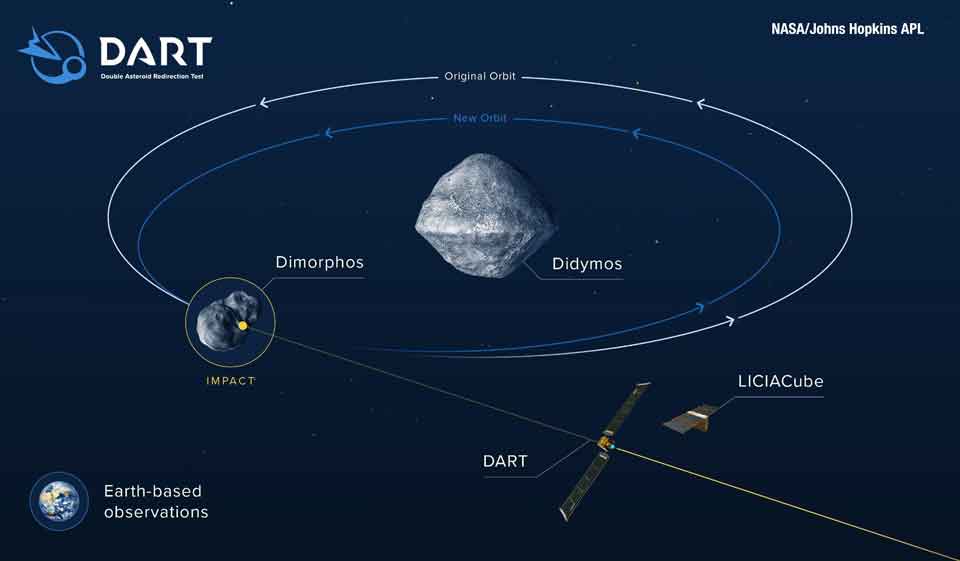
The basic physics of kinetic impacts are well understood, and the mission designers are 100% sure that the orbital period of Dimorphos will change by a detectable amount if the crash is successful. There are unknowns, however. We can’t tell the shape of Dimorphos — it’s never been observed up close, and from Earth the entire Didymos system appears as just a point of light. We suspect the asteroid’s composition is similar to that of another space rock called Itokawa, which was studied by the Japanese probe Hayabusa, and a type of meteorite called an LL chondrite. But we don’t know its consistency. Is it a rubble pile? Are there a lot of boulders? If so, how big are the boulders? And we don’t know exactly how a rubble pile in space reacts to an impact. How much debris will there be? How does the amount of debris and consistency of the asteroid affect the transfer of momentum? By precisely how much will the orbit of Dimorphos change?
DART aims to help scientists better understand the specific mechanics involved in impacting an asteroid, which will be very useful information should we ever find ourselves in the crosshairs of a near-Earth object (NEO). In addition to having the images from LICIACube, astronomers will use ground-based telescopes to monitor the change in light from the Didymos system to determine the new orbital period of Dimorphos. Then, in 2024, the European Space Agency plans to launch a mission called Hera, which will visit the system and provide a detailed assessment on the outcome of DART’s impact.
Rocks falling from the sky
Rocks have been crashing into planets and each other since the dawn of the solar system. For proof of that, just look up at the Moon and see all the impact craters on its surface. The Earth gets hit by space rocks just as often as the Moon does, but our atmosphere protects us from the smallest rocks, and most of the evidence of larger impacts has been weathered away over time.
According to NASA’s Center for Near Earth Object Studies, about 100 tons of space material come into contact with Earth every day, most of it dust and small rocks that burn up in our atmosphere. You may briefly see some of the more flashy space rocks as meteors, or “shooting stars.” Sometimes a rock is big and strong enough to make it to Earth’s surface as a meteorite.
Once a year on average, a rock 5 meters in diameter hits our atmosphere and creates a large, bright fireball as it breaks up into smaller pieces. About once every 100 to 200 years, we’ll get a 25-30-meter rock, resulting in an airburst explosion that can cause minor damage from the shockwave. In 2013, an object about 20 meters across entered Earth’s atmosphere and exploded above Chelyabinsk, Russia, shattering windows and injuring about 1,500 people.
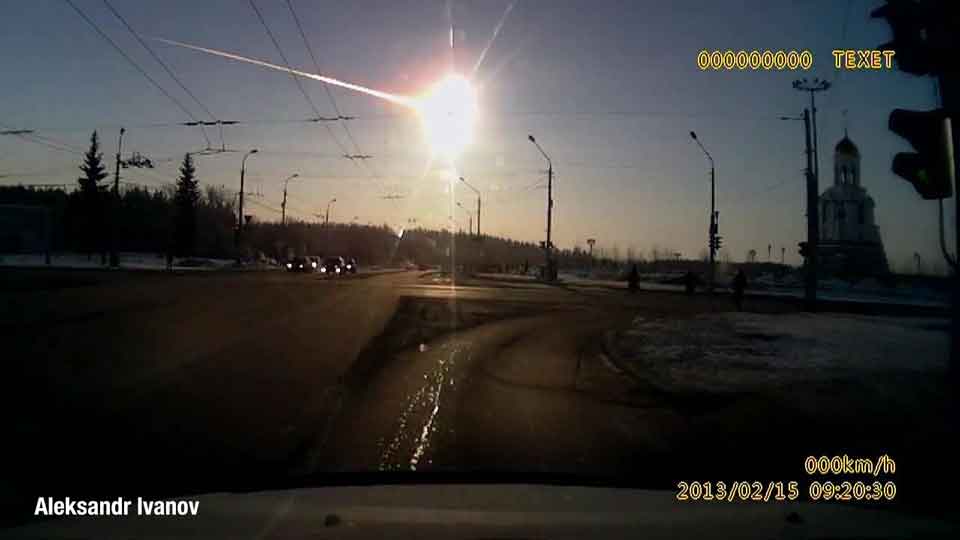
A 50-meter object collides with Earth about once a millennium, causing damage similar to that of a large nuclear weapon. Such an object exploded above Tunguska, Russia, in 1908, flattening 80 million trees over 2,000 square kilometers. Luckily, the area is in a remote part of Siberia and there were no known casualties. But it would have wreaked havoc across a major metropolitan area such as New York or Tokyo.
Depending on the rock’s composition, a 50-meter object could also reach the ground and leave an impact crater, like when a large iron-nickel meteorite hit Arizona 50,000 years ago. This resulted in a well-preserved crater that’s over 1 kilometer across and looks remarkably similar to the ones you see on the Moon or Mercury.
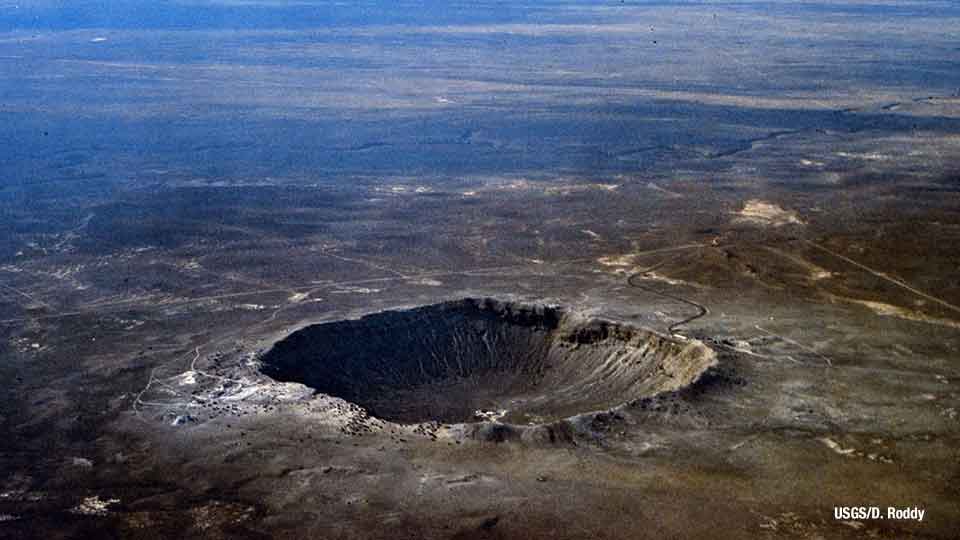
Every 20,000 years or so, a 140-meter object may cause regional or national destruction, and about once every 700,000 years, a 1-kilometer impactor results in global climatic effects that today would cause hundreds of millions of casualties. On the large end of the scale, a 10-kilometer asteroid or comet hits Earth about once every 100 million years, leading to mass extinctions. An object of this size smashed into Mexico’s Yucatán Peninsula 66 million years ago and killed off the dinosaurs.
We have evidence of large impacts from the distant past, but in 1994, the astronomical community watched in real time as a 1.8-kilometer comet collided into Jupiter. Comet Shoemaker Levy-9 had been discovered the year before, after tidal forces had already torn it into multiple fragments. Observatories across the world and in space trained their telescopic eyes on the gas giant as the comet fragments struck the planet and created brown scars across its atmosphere. It was a sobering thought that, had this comet hit Earth, it would have been a global catastrophe.
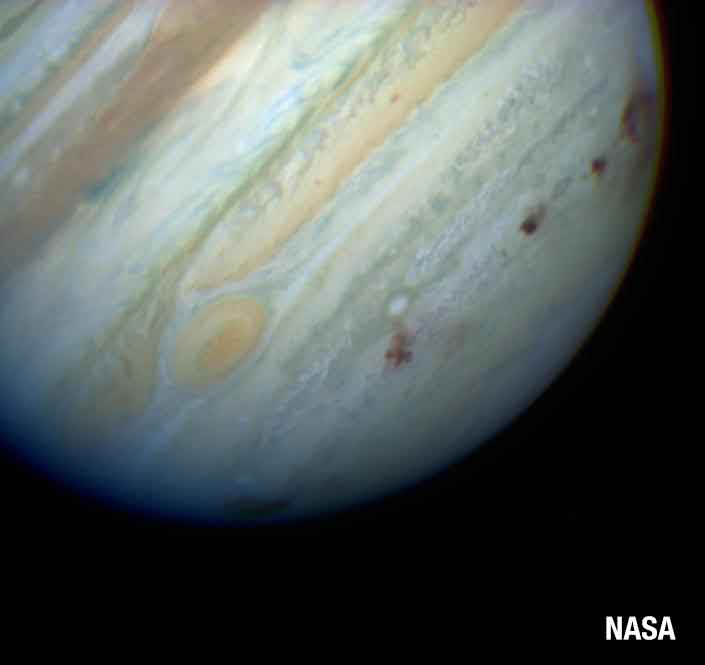
Congress demands action
A few months after Comet Shoemaker Levy-9 hit Jupiter, the US Congress requested that NASA find 90% of near-Earth objects over 1 kilometer in diameter within 10 years. The agency fulfilled the mandate by 2010, but by then lawmakers had issued another mandate directing NASA to find 90% of NEOs 140 meters or larger by 2020. This task has proved trickier — there are many more objects of this size and they’re harder to detect, plus Congress didn’t allocate additional funding. NASA estimates that they’ve found approximately 40% of objects in this new size category, based on statistically predicted populations.
Funding for NASA’s NEO surveying efforts increased during the Obama administration, which directed NASA to plan for a human mission to a near-Earth asteroid. In the latter part of the 2010s, Congress approved additional funds for the DART mission. In 2018, an interagency working group published the National Near-Earth Object Preparedness Strategy and Action Plan, which provided a comprehensive set of the near- and long-term planetary defense goals.
These goals include:
- Enhancing NEO detection, tracking, and characterization capabilities
- Improving NEO modeling, predictions, and information integration
- Developing technologies for NEO deflection and disruption missions
- Increasing international cooperation on NEO preparation
- Strengthening and routinely exercising NEO impact emergency procedures and action protocols.
Detecting and characterizing NEOs
That first goal — of enhancing NEO detection and tracking capabilities — has actually been underway at NASA since 1998.
“It's very rare for an asteroid to impact the Earth, but it's something we want to know about well ahead of time,” said Lindley Johnson, the agency’s Planetary Defense Officer, during a November 17 press briefing. “So, we're out there searching the skies, developing a catalogue of all the asteroids and comets that can come near Earth.”
In those early years, most NEOs were discovered by the Lincoln Near-Earth Asteroid Research (LINEAR) project in White Sands, New Mexico. Starting in 2005, the Catalina Sky Survey near Tucson, Arizona, contributed to the bulk of NEO discoveries. Then, in the past decade, the Panoramic Survey Telescope and Rapid Response System (Pan-STARRS) in Hawaii helped triple the number of NEOs discovered per year.
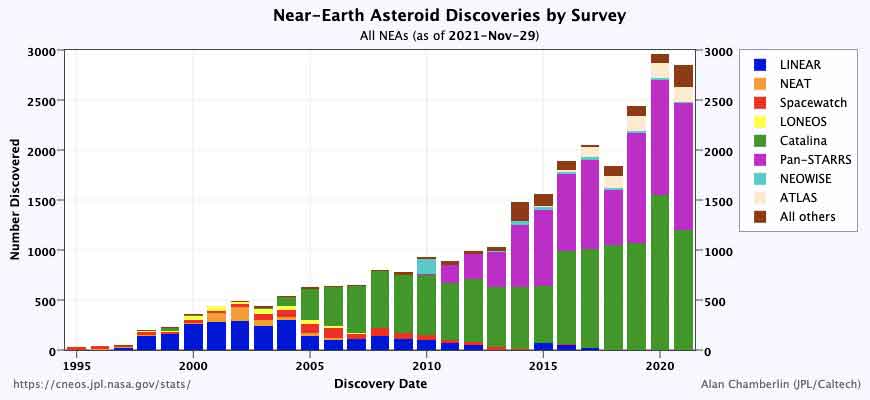
NASA’s Planetary Defense Coordination Office estimates that about 25,000 NEOs larger than 140 meters likely exist. So far, about 10,000 have been discovered, 888 of which are larger than 1 kilometer in diameter.
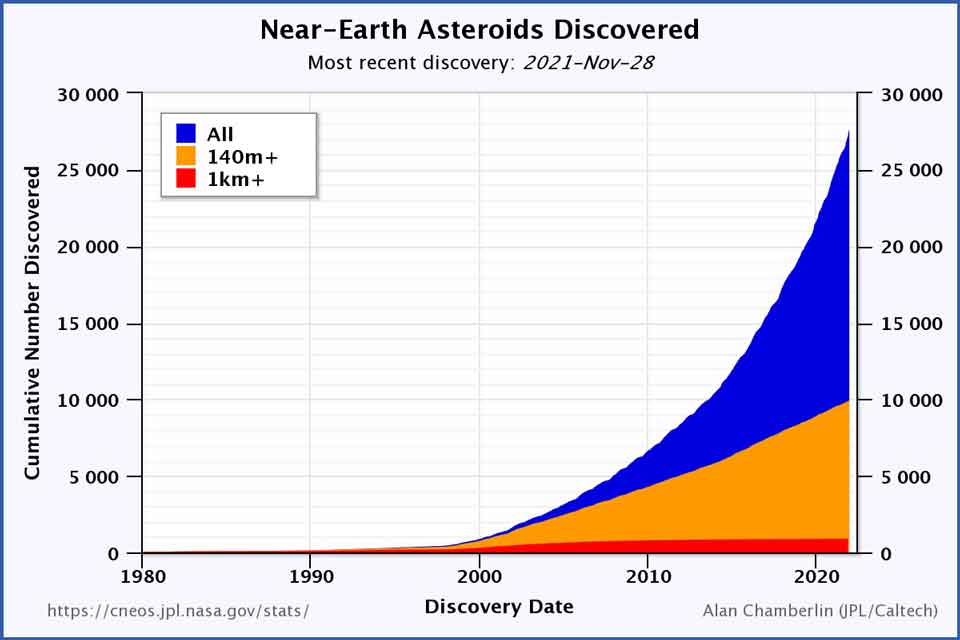
Current and future asteroid survey missions will continue combing the sky to find the remaining NEOs in the 140-meter population, and we can expect to discover a large portion of them over the next decade. One increasingly challenging obstacle to ground-based surveys are mega-constellations of artificial satellites orbiting the Earth.
“Just about every image that we would take would have one of those spacecraft in it,” Johnson noted. To avoid that problem, we can place survey telescopes in space.
Toward that end is NEOWISE, a wide-field infrared space telescope in orbit around the Earth repurposed for the study of near-Earth objects. And earlier this year, NASA selected the NEO Surveyor mission to enter a preliminary design phase, with a target launch date of 2026. NEO Surveyor will be “another infrared mission looking for asteroids, but this one will go to the L1 Lagrange point, 1.5 million kilometers away from Earth, allowing the spacecraft to observe NEOs located between Earth and the Sun.
After discovering a NEO, astronomers conduct follow-up observations to track its orbit, which requires collaboration from organizations and individuals across the globe. A lot of this is coordinated by the International Asteroid Warning Network, an organization sanctioned by the United Nations in 2013.
Vishnu Reddy, the campaign’s coordinator, told NHK: “The [network] is one of those coalitions of the willing. These are amateurs and professionals from different countries around the world who want to participate in defending the Earth in case there’s an asteroid threat, and how they participate is by providing observations of asteroids.”
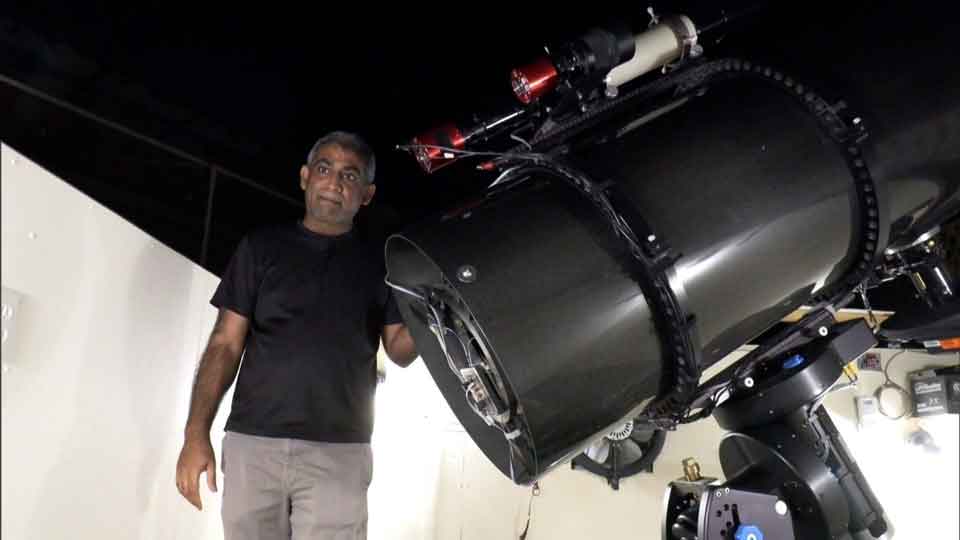
Once an object’s orbital parameters are determined, astronomers calculate its position relative to Earth over the next 100 years or so and make note of any close approaches. So far, no major NEOs are predicted to hit us within that timeframe. But in preparation for finding such an object, researchers have developed tools for comparing and communicating impact risks.
One of those is the Torino Scale, which was adopted by the International Astronomical Union in 1999. It designates how much threat an asteroid or comet poses to Earth on a scale of 0 to 10, with 10 indicating that a collision is certain and would cause global catastrophe. The Torino Scale classifies all currently known NEOs as a 0, indicating that the object’s likelihood of collision is zero or small enough to be essentially zero, or that the object is small enough to burn up in the atmosphere.
In addition to tracking the orbits of NEOs, researchers have made significant progress in understanding the science of asteroids. Several missions have visited near-Earth asteroids, including Japan’s Hayabusa and Hayabusa2 and NASA’s OSIRIS-REx. All three missions found their asteroids to be loose rubble piles. But Hayabusa2 and OSIRIS-REx visited a different type of asteroid than the first Hayabusa, and found them covered in lots of porous boulders — a surprise and a challenge, considering the missions were designed to collect samples of fine sand and small pebbles. Scientists suspect the voids in the porous boulders act as a cushion and absorb the impact of small meteoroids, preventing the boulders from shattering and becoming sand. You wouldn’t want to have major surprises like this when sending an emergency mission to deflect an Earth-bound asteroid, so it’s critical that this sort of basic research is done before that event happens.
How to deflect an asteroid
The U.S.’s Action Plan considers three impact prevention techniques to be the most technologically “mature”: a kinetic impactor, a gravity tractor, and a nuclear explosive. Each has scenarios for which they would be best suited, depending on the size of the object and the amount of lead time before impact. The idea behind all three is to alter the object’s orbit by a tiny amount — ideally, several years to decades before its predicted impact — so that, over time, the asteroid or comet moves far enough off its original trajectory that it misses the Earth.
A kinetic impactor does this by crashing mass into the object, imparting a small change of momentum. A gravity tractor would position a spacecraft near the object and use the craft’s slight gravity to gradually pull it into a different orbit. A nuclear device could alter the object’s orbit by exploding nearby, the radiation heating a thin layer of the NEO’s surface and causing it to recoil in the opposite direction. Or, for a larger NEO, a small nuclear device could explode on its surface, directly imparting a force that would nudge its orbit. Models suggest that most of the NEO would stay intact, and the small amount of debris would spread out over multiple Earth radii within a couple years.
These are all deflection techniques. Alternatively, a nuclear device could be used as a “disruption” technique — that is, literally blowing up the asteroid Armageddon-style by implanting explosives under the surface. Of course, having a whole bunch of asteroid fragments on a collision course with Earth isn’t ideal. But hypothetically this could be a last-ditch effort if all other techniques have failed, or potentially be the only option if there isn’t time for a deflection technique to change the object’s orbit.
The Action Plan urges NASA to develop mission designs and conduct flight demonstrations to validate each of these techniques. In theory, it’s easy enough to put together a test for the kinetic impactor and gravity tractor. But validating a nuclear detonation technique is more problematic. The U.S. and 110 other countries signed and ratified the 1967 Outer Space Treaty, which forbids nuclear weapons in outer space. Presumably, world governments would agree to grant an exception should a catastrophic impact need to be averted, but not for a test when there’s no immediate danger.
Yet the most complicated part of such a mission is not the nuclear explosion itself but designing a spacecraft package that can safely carry the weapon and a fuse that will work in space under specific timing constraints. These are challenges that could be tested without breaking international treaties. But NASA has decided to start off by testing the impactor technique with the DART mission.
How worried should we be?
We don’t currently know of any sizable NEOs on track to collide with our planet. But it’s a sure thing that we will discover one at some point — whether it’s tomorrow, in a decade, in a century, or thousands of years from now. Ideally, by the time we find one of these cosmic threats, humanity will have a ready toolbox of deflection techniques and a solid understanding of how to prevent a catastrophic impact so that we don’t go the way of the dinosaurs. So, it’s a good idea to get started now on test missions like DART.
Thankfully, planetary defense is a relatively straightforward and solvable problem: Find the rocks and make sure they don’t hit us. During the DART launch broadcast, Kelly Fast, the program manager for NASA’s NEO Observations Program, noted that asteroid impacts are “the only natural disaster we can prevent.” Scientists and governments over the past 25 years have made substantial progress toward cataloging near-Earth asteroids and planning NEO action protocols, and additional survey missions and deflection tests over the coming decades should tighten up the remaining gaps in knowledge.
In terms of things to keep you up at night worrying, asteroid impacts should probably be pretty far down the list. There are so many more immediate dangers, both on a societal level (e.g., climate change) and an individual level (car accidents). Thinking about large rocks blasting into Earth is almost like taking a pleasant break from our day-to-day stressors.
